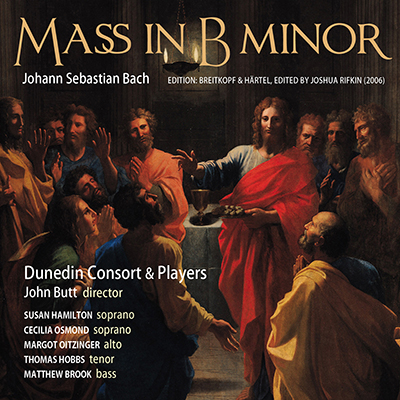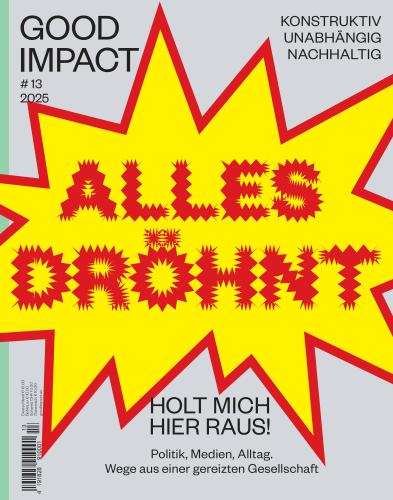
Johann Sebastian Bach – Mass in B Minor (Breitkopf & Härtel Edition)
Dunedin Consort & Players / John Butt
FLAC (tracks) 24 bit/88,2 kHz: 1,87 GB | Artwork | Genre: Classical, Sacred | Style: Baroque, Vocal
Label/Cat#: Linn Records # CKD 254 | Country/Year: UK 2006 | Source: Linn
There are few who strive sincerely to juxtapose the bedfellows of academic rigour and inspired musicianship. Given his recent Handelian activity at the helm of the Dunedin Consort and Players, some might have forgotten that John Butt is a Bach research specialist and author of the Cambridge Handbook on the Mass in B minor. In the booklet he explains his thoughts about historically informed performance practice (one voice per part, following the evidence outlined in the writings of Joshua Rifkin and Andrew Parrott), and discusses his choice to make the first recording of Rifkin’s recent edition (which reconstructs Bach’s score c1749, without later accretions). Butt’s interpretation owes firm allegiance to the “OVPP” creed that will not please everyone (even if detractors have not yet produced a single scrap of proof to refute it), but the Dunedin Consort and Players are never perfunctory or merely dogmatic. This performance demands to be heard.
Butt has considered every musical connection, context, texture and form. Not only do the individual movements feel spot-on in articulation and affekt but the free-flowing pacing from one section to the next makes it easy for the listener to be pulled along. Each section of the Roman Ordinary is envisaged as continuous music, so there are no pregnant pauses between solo and choral movements. The first chords of the “Kyrie” are sung boldly by the 10 singers (five “principals” and another five “ripienists”), and the solemn fugue is performed with gentle ardency; every gesture, detail, suspension and arching line is judged and executed with transparency, flexibility and rhetorical potency.
Thomas Hobbs and Matthew Brook sing the principal lower-voice contrapuntal passages with sensitive blend and superb intonation: they also declaim their solo movements with confidence and eloquence. The higher-voiced principals are marginally less successful: the combination of Susan Hamilton and Cecilia Osmond in the duet “Christe eleison” occasionally threatens fragility but perhaps more authoritative and smoother-toned soprano soloists would have been less adaptable in the choruses. Butt’s flowing tempo for “Agnus Dei” prevents Margot Oitzinger from conveying the breathtaking timelessness some might hanker after but catharsis is tangible in “Benedictus” (performed movingly by Hobbs and flautist Katy Bircher). The galant character adopted by Butt’s elegant harpsichord continuo, Patrick Beaugiraud’s poignant oboe and tasteful strings during “Qui sedes” proceeds without pause into “Quoniam”; Anneke Scott’s sparky horn playing and Matthew Brook’s conversational authority conspire to take no prisoners, and the momentum carries through into a knock-out “Cum Sancto Spiritu”.
Once upon a time the bravery of minimal forces tackling this repertoire was ridiculed by sniffy sceptics. Butt and the Dunedins might not change any entrenched minds; but the climax of “Gratias agimus tibi” is as bold, resonant and glorious as anything one would expect (and not always get) from larger forces. The opening of the “Gloria” bursts forth with radiant splendour but also has a dance-like lilt, and with Bach’s intricate writing emerges as a compelling dialogue.
The Dunedin Consort’s singing conveys the ebb, flow and shading of Bach’s choruses with ease and naturalness. The sonorities of full homophonic chords concluding the grandest choruses are thrilling, whereas the densely polyphonic choral passages always possess clarity and logic thanks to the disciplined interplay of the singers. The five principals combine to rapturous effect in “Et incarnatus est”, and Butt’s handling of the strings and flutes during “Crucifixus” is both patient and emotionally charged.
Many excellent recordings of this monumental work cater for different tastes and priorities. Some have more consistent line-ups of soloists, equally impressive choirs (of varying sizes) and comparably strong artistic direction. Although an excellent one voice-per-part version is nothing new, Butt’s insightful direction and scholarship, integrated with the Dunedin’s extremely accomplished instrumental playing and consort singing, amount to an enthralling and revelatory collective interpretation of the Mass in B minor – perhaps the most probing since Andrew Parrott’s explosive 1985 version (Virgin, 8/86R). ~David Vickers Grammophone
This is the first complete recording of the Mass to be based on Rifkin’s latest thoughts on the subject. While he still maintains the one-to-a-part doctrine, the present forces use five additional ripienists as well, which does give the performance some added heft when needed. Even so, a choir with a max of ten singers does not, to my mind, do justice to the large-scale conception of this work. Bach’s masterpiece is really a pastiche in four different parts from four different time periods, collected for some unknown reason for a presentation unknown.
But he did this for a reason, and it is foolish to think of this as some sort of haphazard or willy-nilly assemblage for just another Sunday service. Everything about his work, really a rewriting of many previous pieces, cries out for justification as a major effort designed to show off something to someone, and history has given its judgment that this quilt is far greater than the sum of its parts, and Bach’s final 1748-50 version is essentially a rewrite of the earlier 1733 Missa that formed the basis for this work. As to the Rifkin doctrine-I have made my feelings known about this all over this site, and I still refuse to believe those who would assign to Bach the unequivocal status as a chamber musician only. Would we do the same for Handel, a one-to-a-part Messiah? But to me the real proof is in the way this thing sounds-with even a small orchestra of 7 strings, 2 flutes, 3 oboes, 2 bassoons, horn, 3 trumpets, timpani, and organ, all going at full steam in certain passages, the voices barely hold their own, and even in this recording, designed specifically to accommodate such an ensemble, the results are still sometimes iffy. I repeat my maxim-I can think of no composer in the history of music who did not salivate over the idea of larger forces in his or her music, and that includes Handel, Mozart, Haydn-and Bach.
But credit must be given when it is due, and this is a terrific recording, well-sung and expertly conducted. The ripienists make it worthwhile in my opinion-I am not sure I could take a 5-singer chorus in this monumental music. But the love and enthusiasm they generate is catching, while the solo work is effortlessly fluid and beautifully rendered. The surround sound, on top of it all, is nicely managed, and the tempos and sense of joyous abandon-just listen to the Osanna-make for an illuminating experience.
So while this will not replace such standards…there is much to recommend here, and no one purchasing will be disappointed. ~Steven Ritter Audiophile Audition
Tracklist:
1 Kyrie eleison 9:38
2 Christe eleison 4:33
3 Kyrie eleison 2:45
4 Gloria in excelsis Deo 1:42
5 Et in terra pax 4:24
6 Laudamus te 4:08
7 Gratias 3:04
8 Domine deus 5:11
9 Qui tollis 2:46
10 Qui sedes 3:58
11 Quoniam tu solus Sanctus 4:10
12 Cum Sancto Spiritu 3:47
13 Credo in unum Deum 1:46
14 Patrem omnipotentem 1:54
15 Et in unum Dominum 4:12
16 Et incarnatus est 2:55
17 Crucifixus 3:03
18 Et resurrexit 4:02
19 Et in Spiritum sanctum 5:28
20 Confiteor 3:40
21 Et expecto 2:07
22 Sanctus 4:58
23 Osanna 2:39
24 Benedictus 4:55
25 Osanna – da capo 2:40
26 Agnus Dei 4:26
27 Dona nobis pacem 3:16
Dunedin Consort & Players:
Susan Hamilton – soprano 1
Cecilia Osmond – soprano 2
Margot Oitzinger – alto
Thomas Hobbs – tenor
Matthew Brook – bass
John Butt – Director
Download:
mqs.link_BachDunedinCnsrtMassinBMinr24B.part1.rar
mqs.link_BachDunedinCnsrtMassinBMinr24B.part2.rar




















![Glenn Gould - The Complete Columbia Album Collection (2015 Remastered Edition) [Qobuz FLAC 24bit/44,1kHz] Glenn Gould - The Complete Columbia Album Collection (2015 Remastered Edition) [Qobuz FLAC 24bit/44,1kHz]](https://getimg.link/images/imgimgimg/uploads/2017/07/2bHwfbA.jpg)
![The Berkshire Boy Choir, Leonard Bernstein - Bernstein: Mass - A Theatre Piece for Singers, Players and Dancers (1971/2017) [FLAC 24bit/96kHz] The Berkshire Boy Choir, Leonard Bernstein - Bernstein: Mass - A Theatre Piece for Singers, Players and Dancers (1971/2017) [FLAC 24bit/96kHz]](https://getimg.link/images/imgimgimg/uploads/2019/01/TSwWwCX.jpg)
![Dunedin Consort, John Butt - Bach: Magnificat, Christmas Cantata (2015) [LINN FLAC 24bit/96kHz] Dunedin Consort, John Butt - Bach: Magnificat, Christmas Cantata (2015) [LINN FLAC 24bit/96kHz]](https://getimg.link/images/imgimgimg/uploads/2016/06/KV9djGY.jpg)
![Dunedin Consort, John Butt - Mozart: Requiem - Reconstruction of 1st performance (2014) [LINN FLAC 24bit/192kHz] Dunedin Consort, John Butt - Mozart: Requiem - Reconstruction of 1st performance (2014) [LINN FLAC 24bit/192kHz]](https://getimg.link/images/imgimgimg/uploads/2017/08/Y2hJgOe.jpg)
![Rinaldo Alessandrini & Concerto Italiano - Bach: Variations on Variations (Arr. for Baroque Ensemble) (2017) [Qobuz FLAC 24bit/88,2kHz] Rinaldo Alessandrini & Concerto Italiano - Bach: Variations on Variations (Arr. for Baroque Ensemble) (2017) [Qobuz FLAC 24bit/88,2kHz]](https://getimg.link/images/imgimgimg/uploads/2018/07/5CtvYYk.jpg)
![Dunedin Consort, John Butt - J.S. Bach: John Passion - Reconstruction Of Bach’s Passion Liturgy (2013) [LINN FLAC 24bit/88,2kHz] Dunedin Consort, John Butt - J.S. Bach: John Passion - Reconstruction Of Bach’s Passion Liturgy (2013) [LINN FLAC 24bit/88,2kHz]](https://getimg.link/images/imgimgimg/uploads/2017/08/Is0Y763.jpg)
![Iestyn Davies - Handel: Your Tuneful Voice - Handel Oratorio Arias (2014) [LINN FLAC 24bit/96kHz] Iestyn Davies - Handel: Your Tuneful Voice - Handel Oratorio Arias (2014) [LINN FLAC 24bit/96kHz]](https://getimg.link/images/imgimgimg/uploads/2017/08/wRILeUr.jpg)
![Massimo Giuseppe Bianchi - Around Bach (2016) [FLAC 24bit/96kHz] Massimo Giuseppe Bianchi - Around Bach (2016) [FLAC 24bit/96kHz]](https://getimg.link/images/imgimgimg/uploads/2018/03/vJl4N8p.jpg)
![Dunedin Consort - J.S. Bach: Matthew Passion (Final version, c. 1742) (2008) [LINN FLAC 24bit/88,2kHz] Dunedin Consort - J.S. Bach: Matthew Passion (Final version, c. 1742) (2008) [LINN FLAC 24bit/88,2kHz]](https://getimg.link/images/imgimgimg/uploads/2017/07/WBfLR2w.jpg)
![Dunedin Consort, John Butt - J.S. Bach: Six Brandenburg Concertos (2013) [LINN FLAC 24bit/192kHz] Dunedin Consort, John Butt - J.S. Bach: Six Brandenburg Concertos (2013) [LINN FLAC 24bit/192kHz]](https://getimg.link/images/imgimgimg/uploads/2017/07/oOwxBlD.jpg)
![Zuzana Ruzickova - J.S. Bach: The Complete Keyboard Works (2016) [FLAC 24bit/96kHz] Zuzana Ruzickova - J.S. Bach: The Complete Keyboard Works (2016) [FLAC 24bit/96kHz]](https://getimg.link/images/imgimgimg/uploads/2018/09/r94XYtX.jpg)
![Dunedin Consort, John Butt - George Frideric Handel: Acis & Galatea (Original Cannons Performing Version 1718) (2008) [LINN FLAC 24bit/88,2kHz] Dunedin Consort, John Butt - George Frideric Handel: Acis & Galatea (Original Cannons Performing Version 1718) (2008) [LINN FLAC 24bit/88,2kHz]](https://getimg.link/images/imgimgimg/uploads/2017/08/nONC0Q2.jpg)
![Johann Sebastian Bach - Violin Concertos - Cecilia Bernardini, Dunedin Consort, John Butt (2016) [LINN FLAC 24bit/192kHz] Johann Sebastian Bach - Violin Concertos - Cecilia Bernardini, Dunedin Consort, John Butt (2016) [LINN FLAC 24bit/192kHz]](https://getimg.link/images/imgimgimg/uploads/2017/03/QzVSDMC.jpg)
![Les Arts Florissants & William Christie - J.S. Bach: Mass in B Minor (Live in Paris) (2018) [FLAC 24bit/44,1kHz] Les Arts Florissants & William Christie - J.S. Bach: Mass in B Minor (Live in Paris) (2018) [FLAC 24bit/44,1kHz]](https://getimg.link/images/imgimgimg/uploads/2019/11/teKiuNc.jpg)
![The Netherlands Bach Society, Jos Van Veldhoven - J.S. Bach: Mass in B minor (2007) [FLAC 24bit/192kHz] The Netherlands Bach Society, Jos Van Veldhoven - J.S. Bach: Mass in B minor (2007) [FLAC 24bit/192kHz]](https://getimg.link/images/imgimgimg/uploads/2017/11/oGoTFf1.jpg)